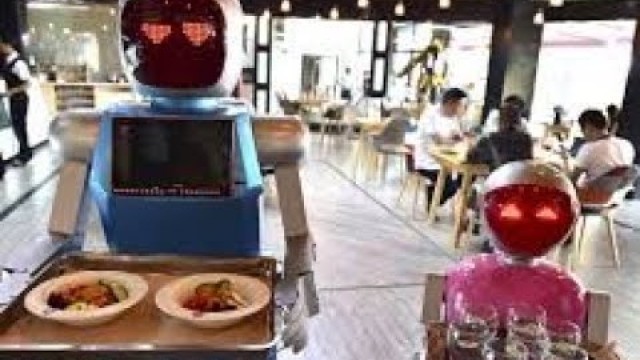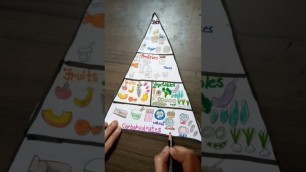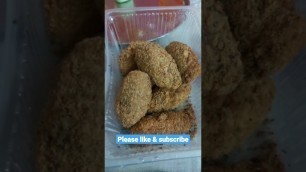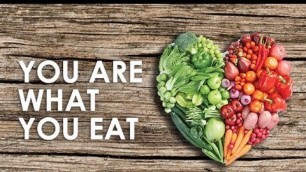

'Food manufacturing robots are commonly used in the dispensing, feed placement, cutting, packaging or casing of food, pick-and-placing products into containers, and sorting. ... RobotWorx integrates industrial robots into many manufacturing processes, including food.Cobots, the first step towards a robot restaurant Cobots are advanced robots that can work alongside humans. Restaurants using cobots were called automats and have been in use since the 1970s. Cobots can be used primarily to perform simple tasks such as serving or vending food items.Robots in Agriculture and Food industry agricultural robot is a robot deployed for agricultural purposes. ... Emerging applications of robots or drones in agriculture include weed control, cloud seeding, planting seeds, harvesting, environmental monitoring and soil analysis. Food manufacturing robots are commonly used in the dispensing, feed placement, cutting, packaging or casing of food, pick-and-placing products into containers, and sorting. ... RobotWorx integrates industrial robots into many manufacturing processes, including food.Robots in restaurants, also called automated restaurants, are making the food industry safer, personalized and more efficient. Robots can be found throughout the restaurant industry flipping burgers to specific preferences, pouring the perfect cup of coffee or even preparing fast-casual “bowled” meals. Ecorobotix. Naio Technologies. Energid Citrus Picking System. Agrobot E-Series. Blue River LettuceBot2. Agribotix. Vision Robotics. RoBoPlant.High-tech farming” is no oxymoron. A contemporary agricultural operation is more likely to resemble Silicon Valley than American Gothic, what with apps that control irrigation, GPS systems that steer tractors and RFID-chipped ear tags that monitor livestock. And robotics is an increasingly key part of that technological stable. Robots pick apples, gather strawberries, harvest lettuce and strip away weeds. Drones gather aerial images that help farmers quickly assess crop health. And robotic greenhouses are sprouting up thousands of miles away from traditional farmland regions, growing vegetables in the backyards of high-consumption urban markets. It all comes at a time when growers face a costly, long-term labor shortage and — with the global population expected to rise from 7.7 billion to 9.7 billion in just over 30 years — food demand is poised to rise significantly.On its face, crop harvesting seems ripe for automation. It’s physically taxing and highly repetitive — the kind of labor that\'s often most effectively targeted in the robot revolution. (See factories, manufacturing, mining, logistics processing.) But that’s not necessarily the case. Picking crops also requires manual dexterity and a delicate touch. Many fruits bruise easily in the heat, and leafy vegetables are easily torn. And most robots just aren’t advanced enough to handle that level of precision. Remember, it wasn’t all that long ago that roboticists finally got a cutting-edge bot to catch a ball — simple enough for humans, far less so for robots. But agtech companies in the private sector and robotics departments in academia continue their efforts to clear that hurdle.How it’s using farming and agricultural robots: Gary Wishnatzki is vocal about the labor pinch he says growers have faced over the last few years. The owner of berry supplier Wish Farms told the New Yorker in April that he relies on workers hired through expensive temporary visa programs. Among reasons for America\'s labor shortage, the article identifies suppressed immigration and a diminished appetite among low-skilled domestic workers to do the backbreaking labor of strawberry harvesting. Wishnatzki\'s push to automate isn’t about eliminating farm jobs, he argues, but meeting the demands of consumers who’ve come to expect fresh strawberries even in the dead of winter. He’s making that push as co-founder of Harvest CROO, a startup that developed an advanced strawberry-harvesting robot called Berry 5. It uses a variety of robotic components — rather than a single arm — to grab the leaf, pick the berry and pack it. Computer vision helps Berry 5 decipher ripe berries from non-ripe ones before plucking. And it\'s fast compared to human laborers, purportedly able to pick a plant in eight seconds and shift to the next in one-and-a-half. Developed thanks to millions in investment dollars from others in the berry industry, Berry 5 is currently working Florida fields on a trial run. The company reportedly hopes to commercialize it before the end of 2019.'
Tags: Robots , sushi chef , burger bot , bartender , alibaba group , obots , Robots in restaurants , Freshippo's restaurant , Robot restaurant bangalore , agribot , robochef , motoman sdac , Monseiur cocktail , pancake bot , oreo robot , Blue River LettuceBot2. Agribotix. Vision Robotics. RoBoPlant. , including food
See also:

















comments